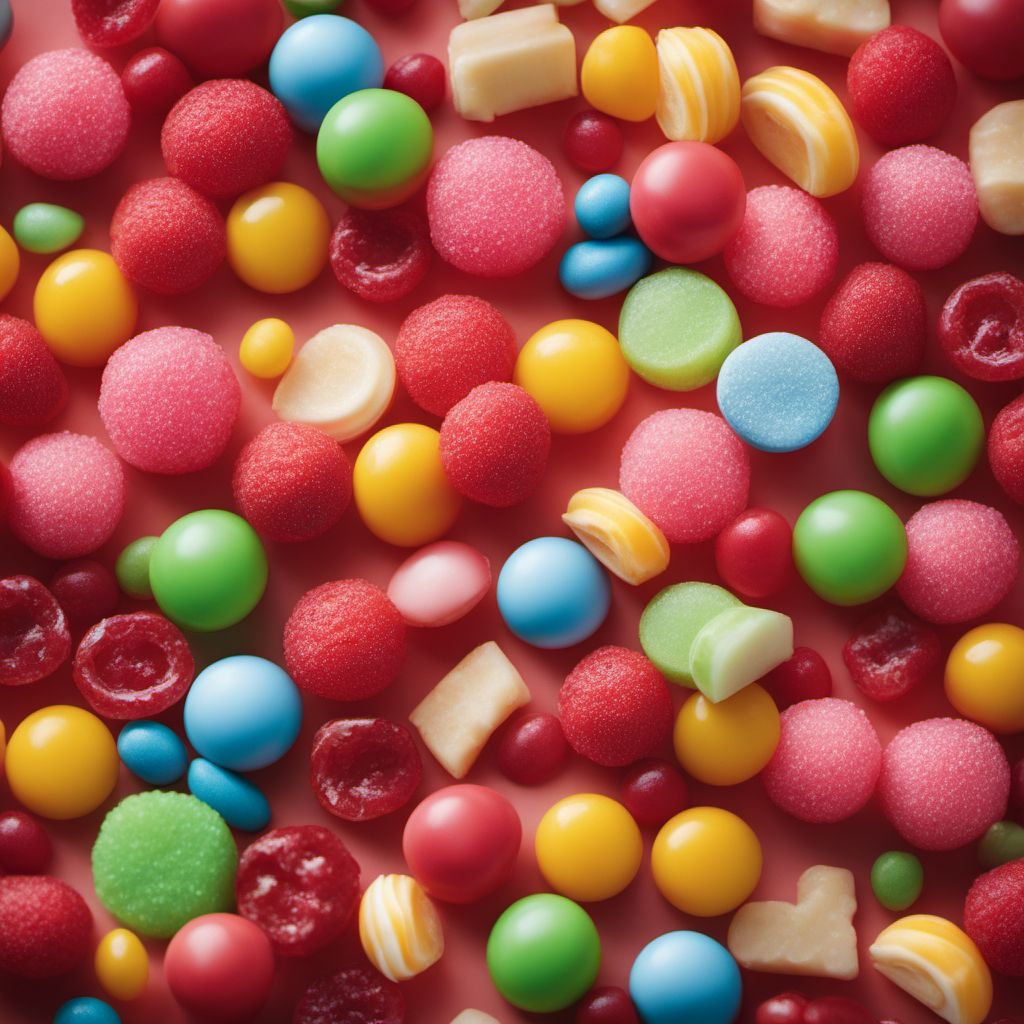
Ingredient
Candies (soft and hard)
Sweet Delights: Exploring Soft and Hard Candies
Candies are sweet treats made by combining sugar, flavorings, and other ingredients. Soft candies have a chewy and pliable texture, often with a smooth and creamy consistency. They can be infused with various flavors like fruit, chocolate, or caramel. Hard candies, on the other hand, are solid and brittle, typically with a crystalline structure. They come in a range of flavors, from fruity to minty, and can have a translucent or opaque appearance. Candies are enjoyed as standalone treats, used as toppings or decorations, and incorporated into desserts and baked goods.
Origins and history
The history of candies dates back thousands of years. Ancient civilizations, such as the Egyptians and Greeks, were known to enjoy sweet treats made from honey and fruits. The production of candies evolved over time, with advancements in sugar processing techniques and the introduction of new ingredients and flavors. In the 17th century, sugar became more accessible, leading to the widespread popularity of candies. Today, candies are enjoyed worldwide and are an integral part of various cultural celebrations and holidays.
Nutritional information
Candies are high in sugar and calories, providing a quick source of energy. They are low in nutrients and should be consumed in moderation as part of a balanced diet. Some candies may contain allergens like nuts, dairy, or gluten, so it is important to read the ingredient labels carefully for individuals with specific dietary restrictions or allergies.
How to select
When selecting soft candies, look for products that are fresh and free from signs of spoilage, such as mold or discoloration. Soft candies should be pliable and not overly sticky. For hard candies, choose ones that are intact and not cracked or chipped. Check the packaging for any signs of tampering or damage. It is also advisable to purchase candies from reputable brands or trusted sources to ensure quality and safety.
Storage recommendations
To maintain the freshness and texture of soft candies, store them in a cool and dry place away from direct sunlight. Keep them in airtight containers or resealable bags to prevent moisture absorption and maintain their chewiness. Hard candies should be stored in a similar manner, away from humidity and extreme temperatures. Avoid exposing them to moisture, as it can cause them to become sticky or lose their crunchiness.
Preparation tips
Candies can be enjoyed as they are, providing a sweet and satisfying treat. Soft candies can be eaten directly, while hard candies can be sucked or crunched. They can also be used as toppings for ice creams, cakes, or cupcakes, adding a burst of flavor and visual appeal. In baking, candies can be incorporated into cookies, brownies, or fudges for added sweetness and texture. Get creative and use candies to decorate gingerbread houses or create edible art pieces.
Culinary uses
Candies, both soft and hard, are widely used in confectionery and dessert-making. Soft candies like gummies, caramels, and marshmallows are popular choices for snacking or as ingredients in desserts. They can be found in various forms, such as fruit chews, licorice, or nougat. Hard candies, such as lollipops, rock candies, or mints, are enjoyed for their long-lasting sweetness and refreshing flavors. They are often used as party favors, gifts, or decorative elements in candy buffets. Candies are available in a wide range of flavors, shapes, and sizes, catering to different preferences and occasions.
Availability
Candies are available worldwide, with different variations and flavors specific to each country or region. They can be found in grocery stores, supermarkets, convenience stores, and specialty candy shops. Additionally, candies are often associated with specific cultural celebrations or holidays, where they are prominently featured and enjoyed.



